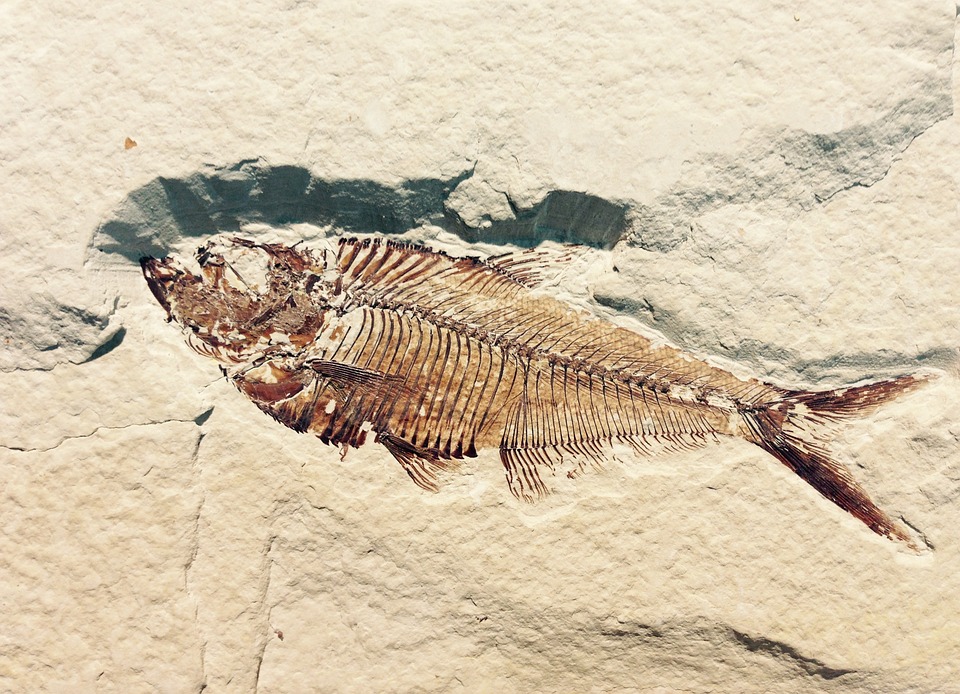

Fossils are important for understanding the history of life on Earth and to understanding how different species have developed over time.
What is a Fossil?
Fossils are the remains of animal bones or ancient plant remains that have been petrified and embedded beneath the soil layer. According to the Ministry of Education and Culture’s website, fossils are all remains, traces or prints of humans, animals and plants that have been preserved in rock deposits from geological or prehistoric times that have passed.
Fossil Formation Process
The process of forming fossils is called fossilization. This process takes anywhere from thousands to millions of years. The stages of fossil formation consist of:
Replacement
Performed on hard parts of organisms, such as shells. The shell which originally consisted of calcium carbonate (CaC03) was replaced by silica.
Petrifaction
The soft parts of plant stems are replaced by precipitation of minerals dissolved in sedimentary water.
Carbonization
Leaves or plant minerals that fall into the swamp are avoided from oxidation and converted into carbon prints without changing their original form.
Printing
During diagenesis, animal or plant remains dissolve, resulting in a cavity, like a mold, which has the same shape and size as the original object. If this cavity is filled with minerals, a cast of the animal/plant is formed.
Features
Below are the characteristics of fossils:
- They are remains or impressions of living beings that have been preserved in rocks or on the ground.
- They may include bones, shells, footprints, and other traces of living things that have existed in the past.
- They are important for understanding the history of life on Earth.
- They help us understand how different species have developed over time.
- They can be of different geological ages, from the precautionary age to the present.
- They can be found in different environments, such as in rocks of marine or terrestrial environments.
- They can be made up of different materials, such as calcite, silicates or iron atoms.
- They can be studied using different techniques such as micropalleonology, paleontology or biostratigraphy.
- They can be used to date rocks and determine their age.
- They can be classified in different types as direct fossils (remains of organisms) and indirect (prints, gas bubbles)
Types of fossils
There are several types of fossils, some of the most common:
- Direct fossils: These are the remains of organisms that have been preserved in rocks or on the ground. These can include bones, teeth, shells and other hard remains.
- Indirect fossils: These are impressions or traces of organisms that have been preserved in rocks or soil. These can include traces, scrapes, gas bubbles and other soft traces.
- Flash fossils: They are impressions of organisms that have been preserved in rocks or soil. These can be shell molds, prints, or other hard remains.
- Caste fossils: These are copies of organisms that have been preserved in rocks or on the ground. These can be shell casts, prints, or other hard remains.
- Fossils of organic remains: They are organic remains of organisms that have been preserved in rocks or soil. These may include plant fibers, seeds, fruits and other organic remains
- Fossils of mineralized remains: They are remnants of organisms that have been replaced by minerals. These may include traces of bones or shells that have been replaced by limestone or silicates.
- Fossils of petrified remains: They are remnants of organisms that have been replaced by minerals. These may include traces of bones or shells that have been replaced by silicates.
- Fossils of permineralized remains: They are remnants of organisms that have been replaced by minerals. These may include traces of bones or shells that have been replaced by limestone.
- Fossils of charred remains: They are remnants of organisms that have been charred, such as tree trunks, leaves, fruits, etc.